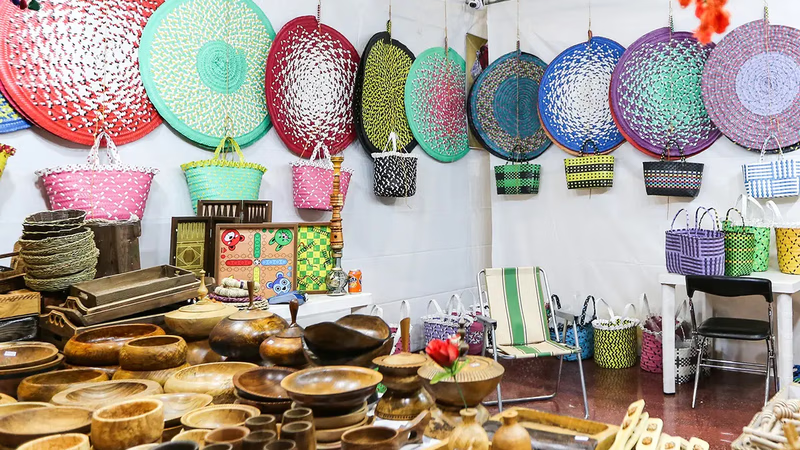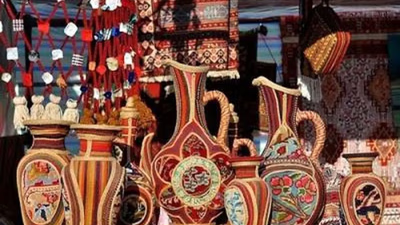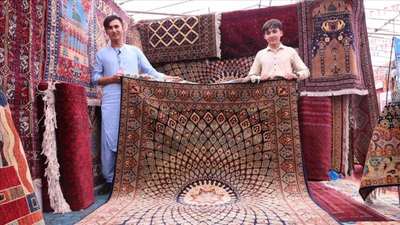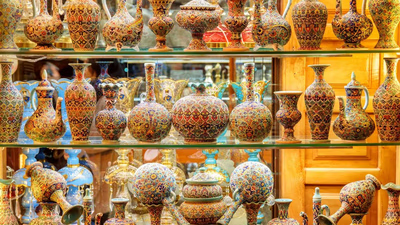
Handmade crafts showcase cultural heritage in global markets.
Handicraft export has an important place in international trade and is considered as a significant part of world trade. These industries are often recognized as a symbol of art and culture of a country or region and have special attractions for foreign markets. Handicrafts usually have high artistic and cultural value and can have unique effects that attract foreign markets.
Handmade products are a part of international markets. Some handicraft products like carpets, handmade jewelry, pottery etc. are in demand all over the world. In the technologically advanced world, the desire for handmade products with handmade value has increased. This desire to buy handmade products strengthens the export market for these industries.
Handmade art products are often inspired by the culture and history of a country or region. Therefore, there is more demand for these products in countries and markets that have a direct cultural and historical connection with them. Handmade art products usually have artistic and exclusive value. The special beauty and quality of these products increases demand and attracts customers.
Media conveys information about handmade art products around the world and can influence demand. If a particular art product is noticed in the media and authoritative sources, the demand for that product will increase. Handicrafts are usually considered as a part of the tourism experience. The demand of some handmade art products can increase due to the demand of tourists in different countries and regions.
The purchasing power of people in different countries and regions plays an important role in the demand for handmade art products. Markets that are able to buy high-value products and can afford to pay high prices stimulate demand. In recent decades, the importance of social and environmental aspects has increased in the willingness to buy handmade art products. Customers are looking for products that are socially responsible and environmentally sustainable. Therefore, handmade art products that meet these considerations may be more in demand.
Various governments and organizations are working to support the export of handicrafts and to improve the quality and development of this industry in their countries. International trade agreements may also help facilitate the export of handicrafts and reduce trade barriers for their export. Exporting handicrafts has economic and cultural value not only for producing countries but also for foreign markets. These industries can contribute to economic development and job creation in different communities around the world while preserving and promoting local art and culture.
The demand for handmade art products depends on a combination of cultural, artistic, economic, tourism and social factors. It is important to understand these factors and pay attention to the needs and desires of the target markets so that the export of handicrafts grows well and the demand for handmade art products increases. Handicrafts can play an important role in the economic development of different areas, especially in rural and less developed areas. Exporting handicrafts can promote employment and contribute to regional balance. Handicrafts can enhance tourism attraction and contribute to the local experience for visitors. The demand of tourists to buy local handicrafts can encourage exports.
-

Middle Eastern handicrafts, renowned for their beauty and artistry, play a significant role in global trade. Countries like Iran, Turkey, Egypt, and Lebanon are key exporters of these crafts, which include carpet weaving, pottery, jewelry making, textiles, metalworking, and wood industries. The unique designs often reflect the region"s rich history and culture, featuring geometric patterns and local materials. Handicrafts not only attract international buyers but also enhance tourism as visitors seek authentic local products. Media promotion is crucial in expanding market reach for these crafts. Events and exhibitions provide platforms for artisans to showcase their work globally. The cultural significance of these handicrafts fosters better understanding and appreciation of Middle Eastern art worldwide while contributing to local economies. "
-

Handicrafts encompass the creation of products using manual skills and various materials, including wood, leather, fabric, and metal. These industries have deep cultural roots and often reflect the traditions and histories of their respective societies. Handicrafts serve not only as artistic expressions but also play a vital role in local economies by generating employment and promoting tourism. The craftsmanship involved in creating items such as carpets, pottery, jewelry, and textiles showcases the creativity and technical skills of artisans. Each piece often carries cultural significance, with designs inspired by local narratives, rituals, and even religious symbols. This connection to culture is essential as it preserves heritage while fostering regional identity. The intricate details and unique combinations of materials in handicrafts highlight their artistic value. As a result, handicrafts are not merely products but representations of cultural stories that contribute to the social fabric of communities.
-

Handicraft producers significantly influence the supply market by creating handmade art products that cater to diverse consumer preferences. The variety, quality, and design of these products are crucial in shaping demand. Factors such as marketing strategies, distribution channels, and effective customer communication also play vital roles in promoting handicrafts. Global demand is affected by consumer tastes, purchasing power, and experiences with product quality and artistic value. Additionally, government policies and international trade agreements impact production and trade dynamics in the handicraft sector. Key players in the global handicraft market include China, India, Thailand, Mexico, Morocco, and Iran as major producers. Conversely, the United States, European Union countries, Japan, Australia, and Canada are significant consumers of handicrafts. Cultural heritage influences demand patterns as tourists often seek unique handmade items as souvenirs. Understanding these dynamics among producers, marketers, customers, and regulatory frameworks is essential for enhancing the handicraft supply chain.
-

Modern handicrafts integrate traditional techniques with advanced technologies to enhance quality and productivity. This sector emphasizes design and creativity, appealing to contemporary consumer tastes. Innovations such as 3D printing, nanostructure technology, and laser cutting have revolutionized product offerings, enabling the creation of unique jewelry, smart textiles, and intricate wooden artifacts. The use of electronic technology has led to the development of accessories compatible with modern devices, while smart textiles incorporate features like thermal sensors and antibacterial properties. Additionally, advancements in building decoration have introduced products like 3D tiles and smart lighting systems. These innovations not only attract younger customers but also contribute to the economic growth of regions by preserving cultural identities. Modern craftspeople leverage online marketing strategies to reach target audiences effectively. By focusing on sustainable practices and environmental considerations, this industry aims to balance tradition with modernity.
-

Handicraft exports play a vital role in international trade, symbolizing the art and culture of various regions. These products, including carpets, jewelry, and pottery, are highly sought after globally due to their unique artistic value. The increasing desire for handmade items has bolstered the export market, particularly in regions with cultural ties to these crafts. Media exposure significantly influences demand; when handicrafts gain attention from authoritative sources, interest surges. Additionally, tourism drives demand as visitors seek authentic local products. Economic factors such as purchasing power also impact the market for high-value handicrafts. In recent years, consumers have shown a preference for socially responsible and environmentally sustainable products, further shaping demand trends. Governments and organizations are actively supporting the handicraft sector through initiatives aimed at enhancing quality and facilitating exports via international trade agreements.
This sector not only contributes to economic development and job creation but also preserves local culture and art forms. Understanding the interplay of cultural, economic, and social factors is crucial for boosting handicraft exports and meeting market demands effectively.





